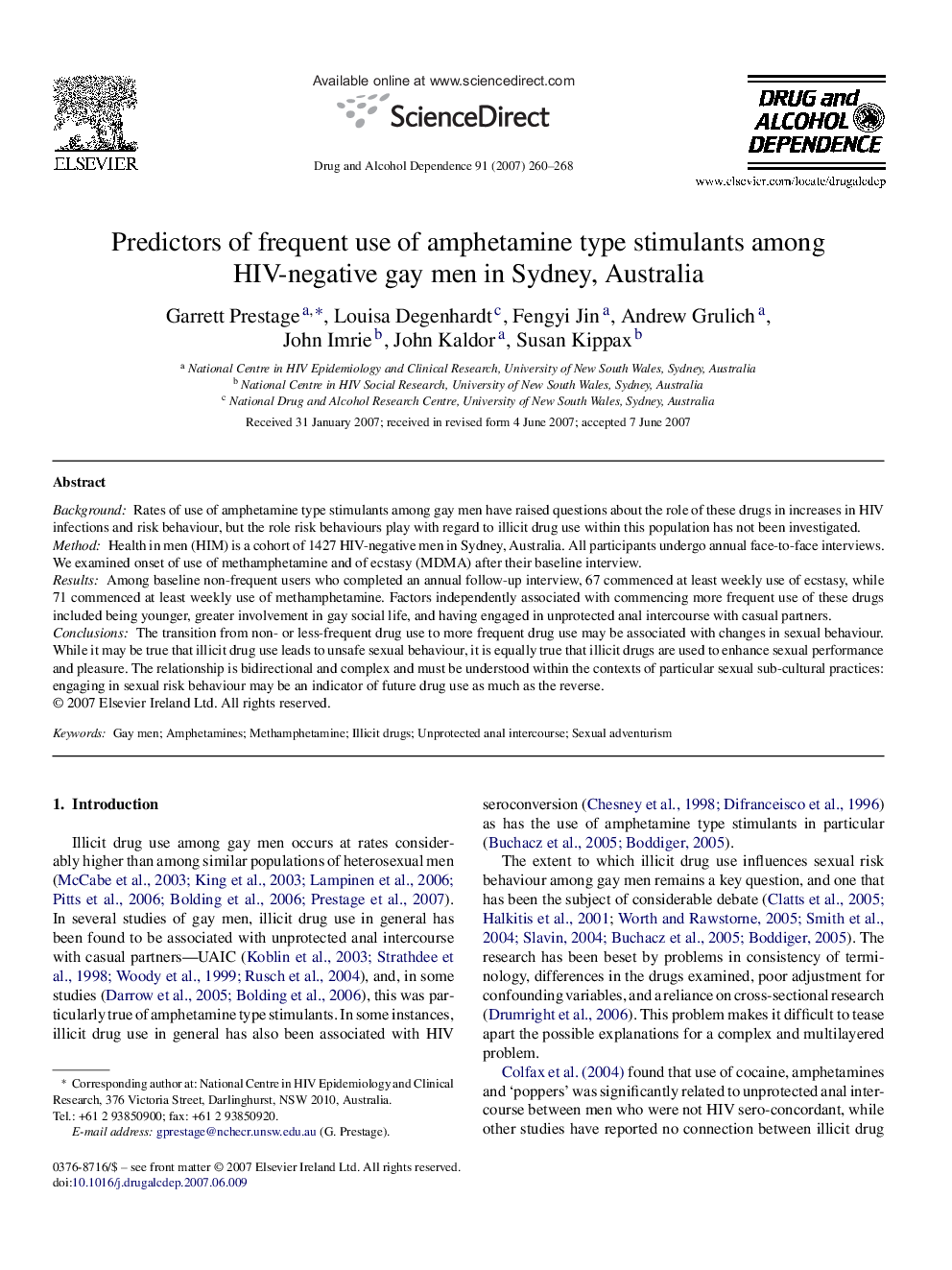| Article ID | Journal | Published Year | Pages | File Type |
|---|---|---|---|---|
| 1071183 | Drug and Alcohol Dependence | 2007 | 9 Pages |
BackgroundRates of use of amphetamine type stimulants among gay men have raised questions about the role of these drugs in increases in HIV infections and risk behaviour, but the role risk behaviours play with regard to illicit drug use within this population has not been investigated.MethodHealth in men (HIM) is a cohort of 1427 HIV-negative men in Sydney, Australia. All participants undergo annual face-to-face interviews. We examined onset of use of methamphetamine and of ecstasy (MDMA) after their baseline interview.ResultsAmong baseline non-frequent users who completed an annual follow-up interview, 67 commenced at least weekly use of ecstasy, while 71 commenced at least weekly use of methamphetamine. Factors independently associated with commencing more frequent use of these drugs included being younger, greater involvement in gay social life, and having engaged in unprotected anal intercourse with casual partners.ConclusionsThe transition from non- or less-frequent drug use to more frequent drug use may be associated with changes in sexual behaviour. While it may be true that illicit drug use leads to unsafe sexual behaviour, it is equally true that illicit drugs are used to enhance sexual performance and pleasure. The relationship is bidirectional and complex and must be understood within the contexts of particular sexual sub-cultural practices: engaging in sexual risk behaviour may be an indicator of future drug use as much as the reverse.
